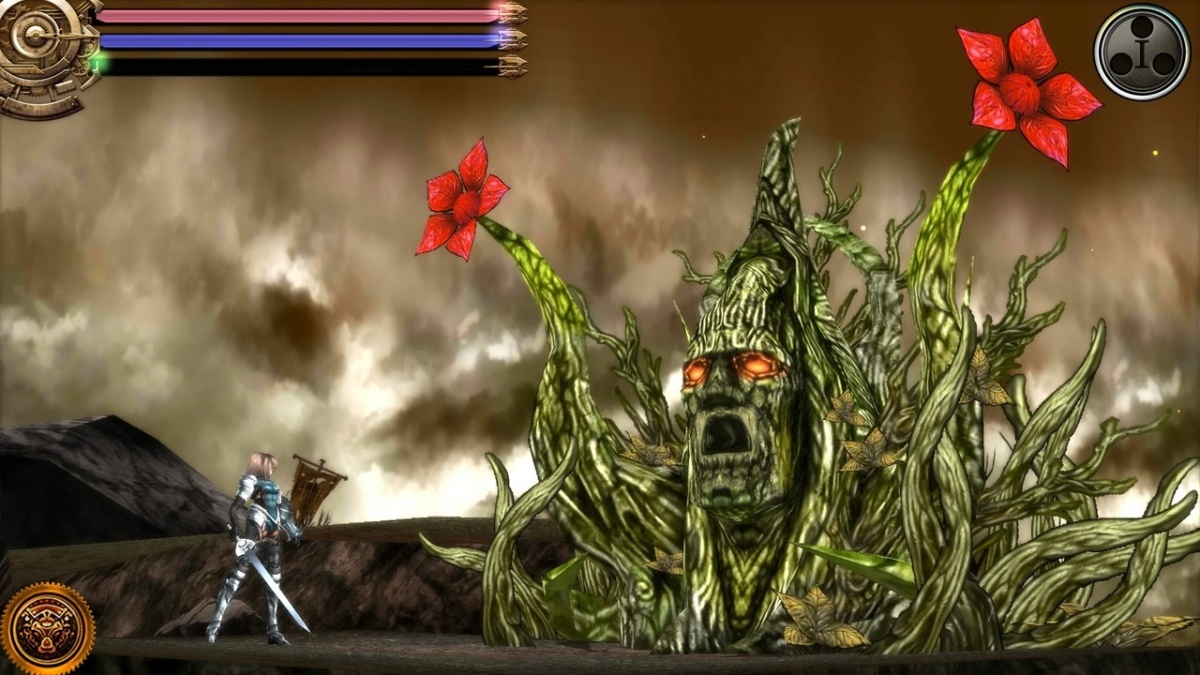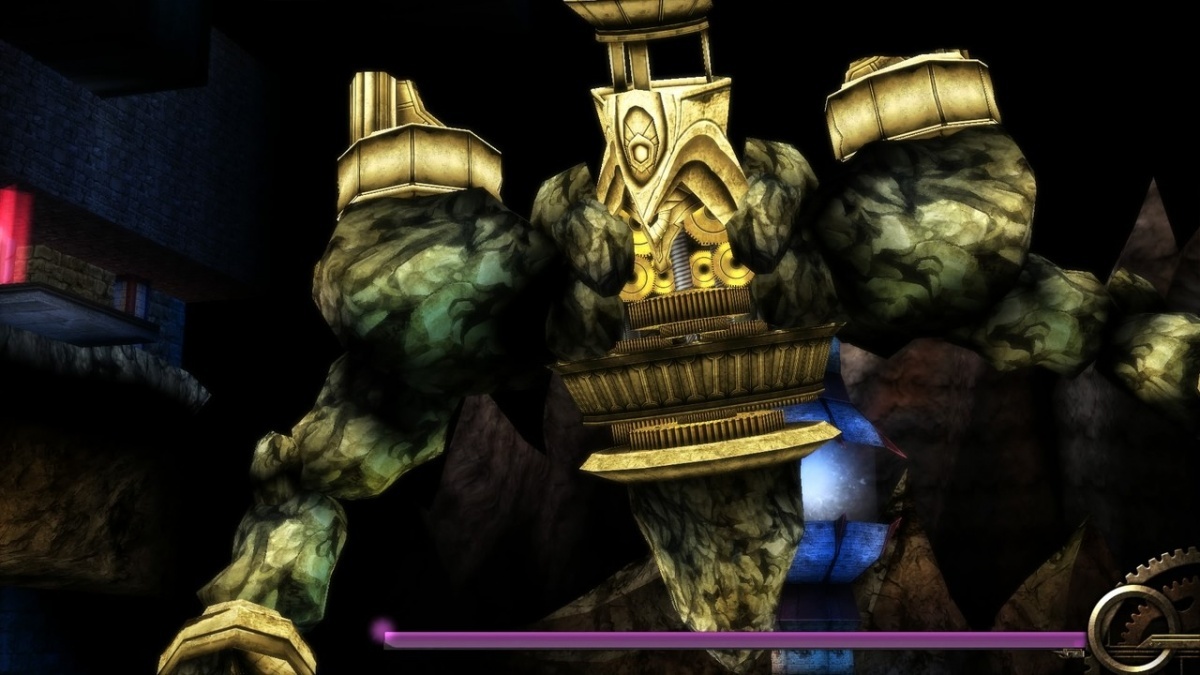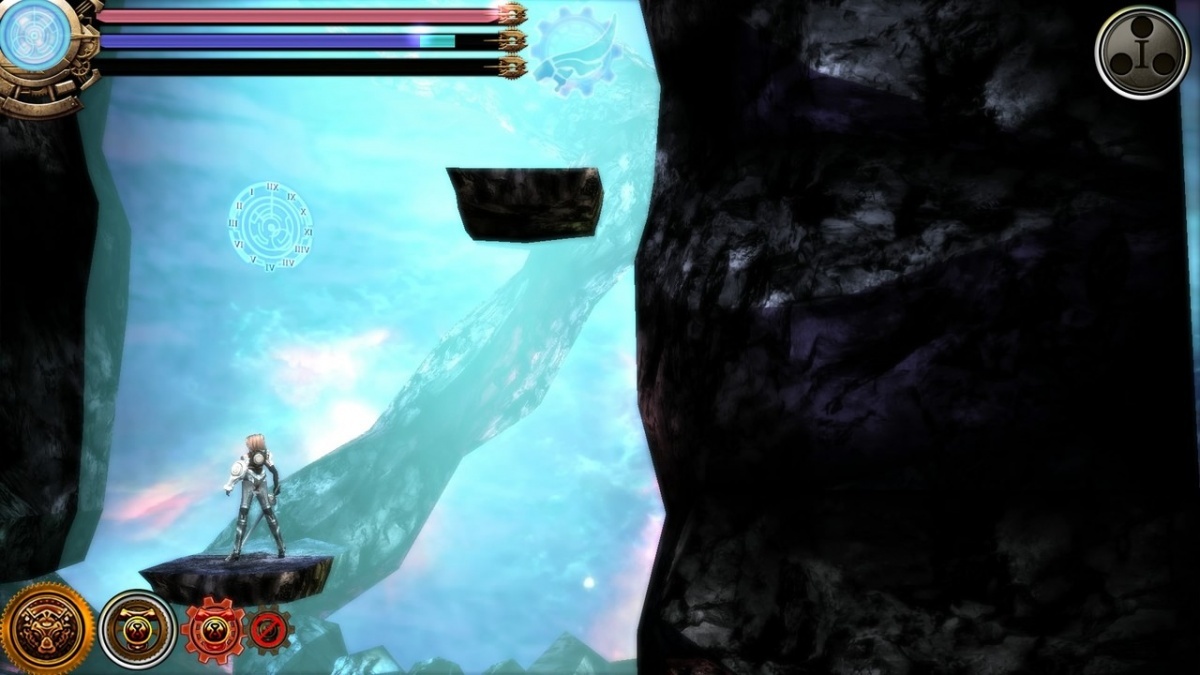AeternoBlade (Nintendo Switch) Review
By Albert Lichi  10.02.2018
10.02.2018

There is no mistaking that the 2D Castlevania games are massively influential for many working indie developers today. There is just something inherently appealing in a 2D platformer with lots of monsters coming at the hero viciously. It is satisfying to overcome the odds and to master a somewhat slower, more methodical control scheme and to absorb the dark fantasy atmosphere. Today, there are many that followed in the footsteps of the immortal Konami classic, such as Slain: Back From Hell, Rogue Legacy, Shovel Knight: Specter of Torment and Momodora: Reverie Under the Moonlight. Way back in 2014, the 3DS was home to a little known title, AeternoBlade which eventually saw ports to many platforms since and has a small, yet dedicated, cult following. On Nintendo Switch now, AeternoBlade combines the best of portability and high visual fidelity, but was it ever actually worth taking on the go?
Corecell Technology pulled off what would have been an impressive game on the 3DS back in 2014. On the small portable low-resolution screens, characters and locales gave the impression that they were detailed. Even the size of the game's world was substantial and varied enough that it felt like a real journey. Corcell put a good amount of effort into AeternoBlade, which even has some full CGI cut-scenes (if a bit dated looking) and even decent replay value thanks to the way the designers implemented New Game+ into the story, and multiple endings. Surely, the Switch port would be considered the definitive version, right? Well, yes and no.

Freyja is a standard heroine for a Castlevania-style action game. Her village gets razed by Beladim, a guy who looks like death, and he even managed to cause the death of her possibly non-platonic friend, Carol. Naturally, Freyja wants some payback and sets out to hopelessly challenge the forces of evil. It isn't long before Beladim annihilates her in a prologue tutorial portion that culminates in the mysterious Vernia saving the protagonist, which is where the standout mechanics come into play. AeternoBlade has the novelty of having time control abilities that allow Freyja to manipulate time in a very similar fashion as Prince of Persia: The Sands of Time or Braid. The basic rewind function is leaned on heavily to solve some environmental puzzles and to bypass a wide variety of traps.
The implementation of these concepts is average, at best, and feels bog-standard. The only time when the time manipulation really stands out is during the boss battles, but even then the bosses themselves have some serious design flaws. One frequent occurrence with every boss is that they seemingly will have sudden bursts of extremely high defence. All attacks will barely scratch them and it is not clear how or why this is happening. There is no indicator why some of these bosses will have such random protection and the only reason why they might have this at all is for the developer to artificially pad out each encounter. Anyone who gets really good with this will always get stuck waiting or whittling down these guys without warning or reason.

While Freyja's jumping and mobility feel fluid enough, her attack animations leave her wide open far too often and for much too long. This is such an issue that it would seem even Corcell might have realised it was frustrating, so it put a band-aid on it by implementing a dash move that can cancel. The problem is that the cool-down for this move is quite long and has to be levelled up in order to be used effectively. The idea of a cool-down for a dodging move is a sound concept; the Bayonetta games allowed for five consecutive dodges before a compulsory wait time, which meant that players had to be more mindful and not spam the dodging. AeternoBlade starts Freyja with only one dodge at the start and it is agonising to have to make it worthwhile by maxing it out, since ability level caps are arbitrarily based on progress in the story. Enemies tend to have large pools of health and, later on, Freyja will end up facing many on-screen at once. Limiting the dash/cancelling ability was a terrible idea and the only way to have corrected this was to tweak the animation so that she doesn't stand around in her floaty and overly-long poses.
AeternoBlade is another example of backwards Metroidvania design where the developer crippled the playability of the hero to make room for upgrades that make them playable and fun to play as. Patience and time (pun not intended) is required in order to power up enough to make Freyja a more responsive and more capable fighter, even when compared to much older games like Super Castlevania IV where Simon had no permanent upgrade system, just the player's wits. Having mechanics as they are presented in AeternoBlade really limits users from getting too good and is much too limiting, coming off more as frustrating.

This game has been ported to PlayStation Vita, PlayStation 3 and 4, the Xbox One and Corcell Technology still has done nothing to elevate this mediocre pretender. Most noticeably, the graphics have not been upgraded since its initial release in 2014. Even by 2014 standards, AeternoBlade resembled a subpar Dreamcast release, but it was on a small 3DS and PS Vita screen, so it was not too bad. When it came time to be ported to home consoles, there should have been some effort to smooth out some of the unsightly 3D models, or even spruce up the environments. The main bad guy, Beladim looks the worst by far and can be best described as borderline Nintendo 64 quality in terms of poly count and character rigging.
Animation lacks range of movement and camerawork in cut-scenes is stiff. It is very clear that this is a very straight port of a low budget 3DS game from 2014. In-game cut-scenes present models that are much better suited for being seen a greater distances and on smaller screens, up close and personal, where all kinds of busted polygons shouldn't be viewed. Things like hands being one solid mesh and not having individual fingers were passable on portable consoles, but on the big screen it looks laughable. Texture work is also very sloppy and designed poorly so that it makes anatomy look unnatural. On large bosses, also, it can seem like the texture artists don't understand the basics of how muscles work.

Cubed3 Rating
Subpar
It is understandable why AeternoBlade has developed its cult following. It is a game full of many good ideas. Unfortunately, AeternoBlade is not the sum of its parts. It is a good try, and even might be a game to admire since there are some interesting ideas involving time travel in what is basically a Castlevania clone. There is a legitimate attempt to make something that had some passion behind, but what holds this Switch version back is that it also comes with all the baggage of the original 3DS release. The developer did not address any of its flaws or make any updates to the visuals to make it comparable to other remakes or upgraded ports on the market. The Switch port is ultimately pointless, better played on the 3DS or PlayStation Vita since they make more sense contextually.
Comments
Comments are currently disabled

 Sign In
Sign In Game Details
Game Details
 Out now
Out now  Out now
Out now  Out now
Out now  Out now
Out now  Subscribe to this topic
Subscribe to this topic Features
Features





 Top
Top

